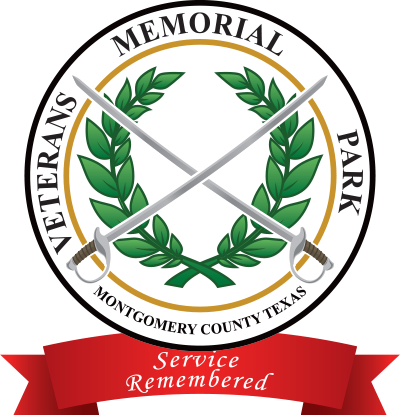
CAPTAIN JEAN PAUL BOULIANE - USAAC
CAPT. JEAN PAUL BOULIANE
11/1941 – 12/1963
Captain Jean Paul Bouliane served in the United States Army Air Corps during WWII. He was a lead navigator for the B-24 and completed 40 missions. He received the Distinguished Flying Cross for his service.
Bouliane served through World War II, the Korean War, and continued to serve in the United States Air Force Reserves until 1963. Towards the end of his military service, he wrote the following letter which gives great insight into the man he was and his experiences during the war.
An Undistinguished Military Career
by Jean Paul Bouliane
Like many another, I was drafted for military service before the U.S.A. Declared war on the Axis powers. It was not much before December 6, 1941. I was on a train headed for Camp Walters at Mineral Wells, Texas when news of Pearl Harbor swept through the chair car that was taking a group of us to our first military post.
Shortly thereafter I found myself at Camp Roberts, California for 13 weeks of basic infantry training. Whether he was already there or came shortly afterwards, Henry Hartman was at the same installation, but in the field artillery training center. We got together a few times and somewhere there is a snapshot of Henry and myself astride a couple of old nags while riding in the hills near the camp.
Infantry life didn’t agree with my delicate constitution, so I applied for Army Air Force re-assignment at a fortuitous time when transfers were being encouraged. Luckily, I qualified and was sent, of all places, to Ellington Field back home in Houston. From there to advanced Navigator training at San Marcos, Texas culminating in a commission on December 3, 1943--about two years from the time I started training.
From this time things began to zip along toward exposure to enemy gunfire. I joined an air crew as navigator and we flew our B-24 bomber to England via Brazil and French Morocco, arriving at our base in Mendlesham, England in April 1944. Almost at once we were flying over occupied France and Germany counting flank puffs and dropping bombs with indifferent accuracy on buzz bomb sites, submarine pens, rail yards, harbor installations, bridges and open fields. We named our B-24 “Shadrach” but I didn’t fly many missions in it because I was put on a lead crew, and we flew with other crews in other ships.
Altogether I flew on forty missions (two tours), the longest being eleven hours to Peenemunde where Werner Von Braun and other German scientists were working to perfect the V-2 bomb, jet propulsion, rockets, etc. Somewhere with my military records there is a list of missions which include Kiel, Leipzig, Berlin, Cologne, Regensburg and other less well-known places.
On a mission to Hamburg which proved particularly rough as we crossed the coast of Holland, I had the shock of my life seeing “Shadrach” go down in smoke while thinking “there, but for the grace of God, go I.”. On the same mission, the plexiglass observation bubble from which I had just withdrawn my head, was sheared off by a piece of flak. Another fragment from the same shell shattered the bombardier’s optical glass window beneath his bombsight, blinding him temporarily. Ultimately, he lost one eye. I was unscratched!
After VE Day our air group flew mercy missions which included dropping food and supplies to the starving Dutch and re-patriating French P.O.W.’s who were concentrated at Horsching Air Base on the outskirts of Linz, Austria. On the first of these trips, I went into Linz and visited the former Gestapo headquarters. When Patton’s men took the town, they ordered all citizens to turn in any weapons they owned. These were piled on the floor of various rooms and we, the conquerors, helped ourselves to the spoils of war. My choice was a pair of dress swords that wouldn’t cut a wet noodle. These have been passed on to John Hartman who makes better use of them than anyone else I might have given them to.
It has been almost 45 years since the end of the war in Europe. We still have soldiers stationed in Germany. I have been back to Europe (France and Italy) only once. My air group has had at least two reunions in England and plans another for May 1990. The only member of the group with whom I am still in touch is my former pilot, Ray Brown whose wife, Harriet, was an Army nurse we met in England during WWII. I will be seeing Ray in a few weeks but doubt that either of us will go back to Mendlesham--it’s too far and the memories are not so good that we want to re-live those times. And besides, I’ll be 72 this month and Ray is a couple of years older.
This “short account” was written at the request of John Hartman, my nephew (and possible namesake) and the urging of his mother who may fear that my memory will fail me. Strange that I can remember these far-in-the-past events more vividly than what I did last week. I do recall that I was asked to record my memories of our childhood trip from Buffalo, New York to Houston, Texas in 1924 when I was six years old, Lisette some 16 months younger and Meb a mere babe. This is another story that will be told at another time. Maybe I will do it on tape when I visit Navasota in April.
Given this 11th day of March in the Year of Our Lord Nineteen Hundred Ninety at San Miguel de Allende, Guanajuato, Mexico. -Jean P. Bouliane




